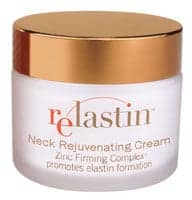Transient use of a topical corticosteroid to limit erythema, scaling, dryness and initial acne exacerbation from topical retinoid acne treatment is a strong patient preference but wasn’t powerful enough to meet a recent study’s primary endpoints of reducing acne severity or retinoid-induced irritation.
While the small degree of acne and irritation score improvements don’t justify topical corticosteroid use in all acne patients receiving retinoids, there is a percentage of patients whose irritation is significant who might benefit, according to the research letter’s authors.
“With proper patient education and management of expectations, most patients can tolerate topical retinoids. However, in the occasional patient unable to tolerate a topical retinoid, the short-term use of [a] topical corticosteroid with topical retinoid may improve tolerability without compromising efficacy,” says senior author Michael Kolodney, M.D., Ph.D., dermatology chief, West Virginia University School of Medicine, Morgantown, W.V.
Dr. Kolodney and colleagues analyzed 16 acne patients in a randomized, split-face, controlled, double-blind trial. All patients applied tretinoin to both sides of their faces for two months. For the first month, patients applied the topical corticosteroid triamcinolone cream to half of their faces and a noncomedogenic emollient as a control on the other half. For the second four weeks, patients used only the retinoid. Researchers evaluated patients at weeks one, two, four and eight.
They found a small, but insignificant, increase in efficacy on the topical corticosteroid side.
“We did see a significant reduction in dryness of the skin for the first two weeks,” he says.
Interestingly, 64 percent of participants preferred the corticosteroid side during week two and 86 percent preferred it by week four. The authors report no adverse effects from treatment, and write that, overall, they saw low rates of irritation intensity from using the moderate strength topical tretinoin.
Dr. Kolodney says that while topical corticosteroids on the face for acne is an off-label use of the medication, he believes that co-administration with retinoids has shown a remarkable ability to reduce harmful side effects of using topical steroids on the face, such as acne and skin atrophy.
He says researchers in this study did not see side effects typically linked to corticosteroid use.
“Our study was relatively small, so larger studies will be needed to fully exclude side effects, such as atrophy, perioral dermatitis or rebound rosacea,” Dr. Kolodney says. “Our study only assessed the use of topical corticosteroids with tretinoin for four weeks. We chose this design because this is when irritation from retinoids is maximal. The safety and efficacy of longer term use of topical corticosteroids will require further study
Click here to view original web page at dermatologytimes.modernmedicine.com


